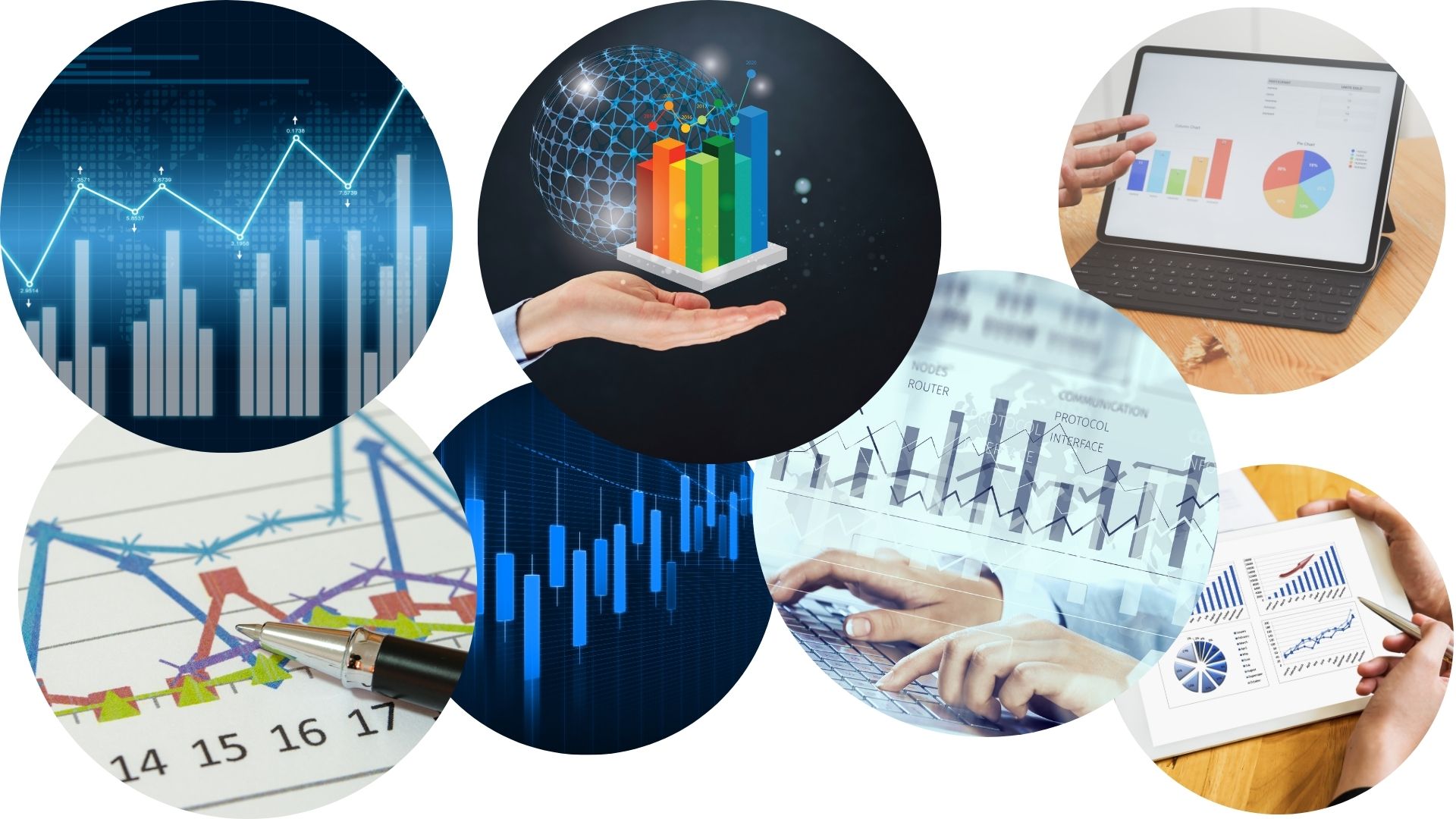-
-
Homepage


Welcome to our dynamic, hands-on course on navigating the RStudio program. This course is designed to empower learners from diverse backgrounds, from data scientists to students, to harness the power of R programming language and RStudio, a robust integrated development environment. As data plays an increasingly pivotal role in our digital world, proficiency in data analysis and statistical programming becomes paramount. This course provides a comprehensive guideline to the essential tools, techniques, and capabilities of R and RStudio, enabling you to not only understand but also to create compelling data analyses and visualizations.
The course starts with the basics of R, slowly building up your skill set to handle complex data structures and create graphical representations of data. As you move forward, you will be introduced to RStudio and its robust features that streamline coding, data management, and visualizations. The learning journey is designed to be as practical as possible, with ample exercises to let you apply your newfound knowledge. The course is divided into four key modules:
Module 1: Introducing R
Module 2: Data Structures in R
Module 3: Creating Graphs in Base R
Module 4: Basic Dataset Analysis in RThis course was developed by Dr. Marco Aurelio Hernandez (Ph.D., MSc (Stat and Edu), BSc) and Alixandria Ali (BSc).
Engaging with this course
To register for this course, complete the registration form. Begin the course with Module 1. For each lesson, read the description.
You can click on the collection of resources in each module.
There is a forum in each Module for activity submission and peer evaluation, and you can add a new topic or respond to a previous one. You can share your learning from this and other readings, comment on the topics from your own experience, comment on others' posts, or provide feedback on how we can improve the content and/or presentation.
There is a final quiz to assess your understanding of some important concepts. Click on the hyperlinks to take you to these items in each topic.
Requirements to obtain the certificate
You may browse this course for free to learn for your personal enrichment. There are no requirements.
To obtain a certificate, a learner must successfully complete:
- All reading requirements
- All activities
- The final exam with a minimum of 80% and a maximum of 3 attempts.
- The self and course evaluation forms
-
Module 1: Introducing R
 Welcome to Module 1, where the journey begins to develop an understanding of utilizing the R statistical programming language. In Lesson 1, you will be introduced to the basics of R; learning to download, install and discuss the fundamentals of Base R, RStudio, and R Tools. Lesson 2 takes a deeper dive into the practical usage of R, including navigation of the workspace, understanding the use of operators, functions, and packages, and guidance on seeking help and saving your work. By the end of this module, you'll be equipped with the necessary knowledge to complete and understand basic functions on Base R, marking your first significant stride in mastering this powerful statistical tool. Completing this module should take you 1 hour and 30 minutes.
Welcome to Module 1, where the journey begins to develop an understanding of utilizing the R statistical programming language. In Lesson 1, you will be introduced to the basics of R; learning to download, install and discuss the fundamentals of Base R, RStudio, and R Tools. Lesson 2 takes a deeper dive into the practical usage of R, including navigation of the workspace, understanding the use of operators, functions, and packages, and guidance on seeking help and saving your work. By the end of this module, you'll be equipped with the necessary knowledge to complete and understand basic functions on Base R, marking your first significant stride in mastering this powerful statistical tool. Completing this module should take you 1 hour and 30 minutes. -
Module1: Lesson 1: Introduction to R
Student Learning Outcomes:
Upon completion of this lesson, you will be able to:
- Discuss the R statistical programming language.
- Download and install Base R, RStudio, and R Tools.
2 URLs -
Module 1: Lesson 2: Using R
Student Learning Outcomes:
Upon completion of this lesson, you will be able to:
- Navigate the R workspace.
- Discuss the use of operators and functions in R.
- Discuss what R packages are and what they are used for.
- Download and set up a general package for use in the workspace.
- Find help with issues in the use of R .
- End an R session and save your work.
- Perform procedures from Module 1 on R (Base R).
6 URLs -
Module 2: Data Structures in R
 Welcome to Module 2. In this module, you will be delving deeper into the elements of R, specifically focusing on R objects and data entry techniques. Lesson 1 explores R objects extensively, providing insights into numbers, vectors, matrices, data frames, factors, lists, strings, and Boolean values, complemented by practical exercises to enter these objects into the R workspace. In Lesson 2, the focus shifts towards the techniques of entering and importing data into R, a fundamental skill in data analysis using this powerful language. This module is designed to solidify your understanding of R objects and to introduce core data handling capabilities. Module 2 is estimated to require 4 hours to complete.
Welcome to Module 2. In this module, you will be delving deeper into the elements of R, specifically focusing on R objects and data entry techniques. Lesson 1 explores R objects extensively, providing insights into numbers, vectors, matrices, data frames, factors, lists, strings, and Boolean values, complemented by practical exercises to enter these objects into the R workspace. In Lesson 2, the focus shifts towards the techniques of entering and importing data into R, a fundamental skill in data analysis using this powerful language. This module is designed to solidify your understanding of R objects and to introduce core data handling capabilities. Module 2 is estimated to require 4 hours to complete. -
Module 2: Lesson 1: R Objects
Student Learning Outcomes:
Upon completion of this lesson, you will be able to:
- Discuss the concept of objects in R.
- Discuss numbers, vectors, and matrices.
- Enter numbers, vectors, and matrices in the workspace.
- Discuss data frames, factors, lists, strings, and Boolean values.
- Enter data frames, factors, lists, strings, and Boolean values in the workspace.
4 URLs -
Module 2: Lesson 2: Entering and Importing Data into R
Student Learning Outcomes:
Upon completion of this lesson, you will be able to:
- Enter and import data into R.
4 URLs -
Module 3: Creating Graphs in Base R
 Welcome to Module 3, a comprehensive exploration of graphical representation in R, where you will be guided through creating your first graph to developing visually compelling data plots. In Lesson 1, you'll get to experience the thrill of creating your first graph using R's powerful visualization tools. Lesson 2 will enhance your graphing skills further by introducing the use of parameters as arguments in R graphing functions, facilitating the creation of more aesthetically pleasing graphs. In Lesson 3, we'll refine your knowledge of parameters controlling size, margins, and legends, equipping you with all the necessary tools to create concise and visually appealing data representations. This module is estimated to require approximately 2 hours to complete.
Welcome to Module 3, a comprehensive exploration of graphical representation in R, where you will be guided through creating your first graph to developing visually compelling data plots. In Lesson 1, you'll get to experience the thrill of creating your first graph using R's powerful visualization tools. Lesson 2 will enhance your graphing skills further by introducing the use of parameters as arguments in R graphing functions, facilitating the creation of more aesthetically pleasing graphs. In Lesson 3, we'll refine your knowledge of parameters controlling size, margins, and legends, equipping you with all the necessary tools to create concise and visually appealing data representations. This module is estimated to require approximately 2 hours to complete. -
Module 3: Lesson 1: Elements of Graphing in R, Part 1
Student Learning Outcomes:
Upon completion of this lesson, you will be able to:
- Create a first graph.
3 URLs - Create a first graph.
-
Module 3: Lesson 2: Elements of Graphing in R, Part 2
Student Learning Outcomes:
Upon completion of this lesson, you will be able to:
- Use parameters as arguments in the R graphing functions to create better-looking graphs.
1 URL -
Module 3: Lesson 3: Elements of Graphing in R, Part 3
Student Learning Outcomes:
Upon completion of this lesson, you will be able to:
- Use parameters that control size, margins and legends.
3 URLs -
Module 4: Basic Dataset Analysis in R
 Welcome to Module 4, this is the last module of the course. It is a cohesive guide that encompasses setting up RStudio, cleaning datasets, performing basic statistical analysis, and creating graphs for visual data representation. In Lesson 1, we establish the foundation by setting up RStudio and getting data into it, ensuring you're ready for the subsequent lessons. Lesson 2 dives into the crucial process of cleaning and preparing a dataset, an essential step for any data analysis. In Lesson 3, we delve into basic methods of statistical analysis, covering descriptive statistics, frequency tables, and cross-referencing tables enabling you to uncover insights from your data. Lesson 4 encapsulates all the previous lessons, teaching you how to use graphing techniques on RStudio to visualize your data beautifully and effectively. This module should take approximately 6 hours to complete.
Welcome to Module 4, this is the last module of the course. It is a cohesive guide that encompasses setting up RStudio, cleaning datasets, performing basic statistical analysis, and creating graphs for visual data representation. In Lesson 1, we establish the foundation by setting up RStudio and getting data into it, ensuring you're ready for the subsequent lessons. Lesson 2 dives into the crucial process of cleaning and preparing a dataset, an essential step for any data analysis. In Lesson 3, we delve into basic methods of statistical analysis, covering descriptive statistics, frequency tables, and cross-referencing tables enabling you to uncover insights from your data. Lesson 4 encapsulates all the previous lessons, teaching you how to use graphing techniques on RStudio to visualize your data beautifully and effectively. This module should take approximately 6 hours to complete. -
Module 4: Lesson 1: This is RStudio
Student Learning Outcomes:
Upon completion of this lesson, you will be able to:
- Set up RStudio.
- Get data into RStudio.
7 URLs - Set up RStudio.
-
Module 4: Lesson 2: Cleaning and Preparing a Dataset
Student Learning Outcomes:
Upon completion of this lesson, you will be able to:
- Clean and prepare a dataset.
7 URLs, 2 Files -
Module 4: Lesson 3: Basic Methods of Statistical Analysis
Student Learning Outcomes:
Upon completion of this lesson, you will be able to:
- Get data into RStudio.
- Find descriptive statistics of a data set and set up frequency tables and cross-referencing (contingency) tables.
- Perform some basic methods of descriptive statistics with RStudio.
4 URLs, 1 File -
Module 4: Lesson 4: Basic Graphs of Statistics
Student Learning Outcomes:
Upon completion of this lesson, you will be able to:- Use graphing techniques on RStudio to visualize given data.
7 URLs, 3 Files - Use graphing techniques on RStudio to visualize given data.
-
Course and Self Evaluation & Certificate
 In this section, you can provide feedback about this course to help us make NextGenU.org better. Once evaluations are completed, you will be able to download your certificate of completion.
In this section, you can provide feedback about this course to help us make NextGenU.org better. Once evaluations are completed, you will be able to download your certificate of completion.

